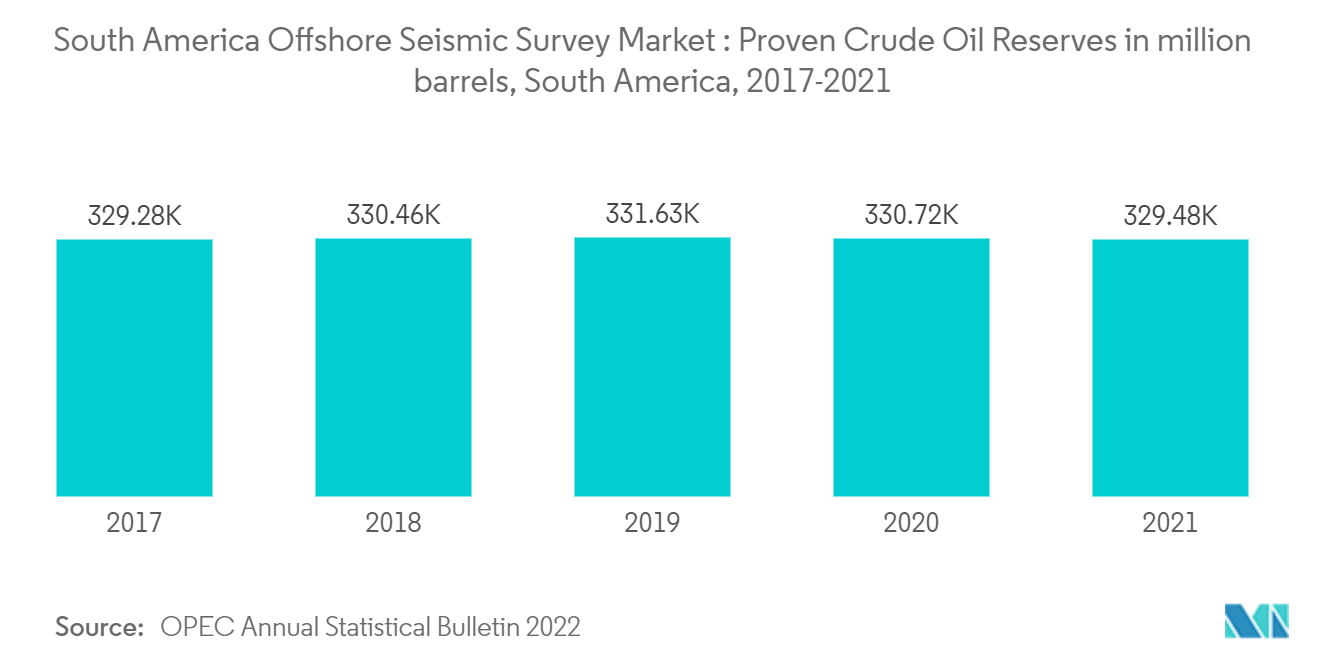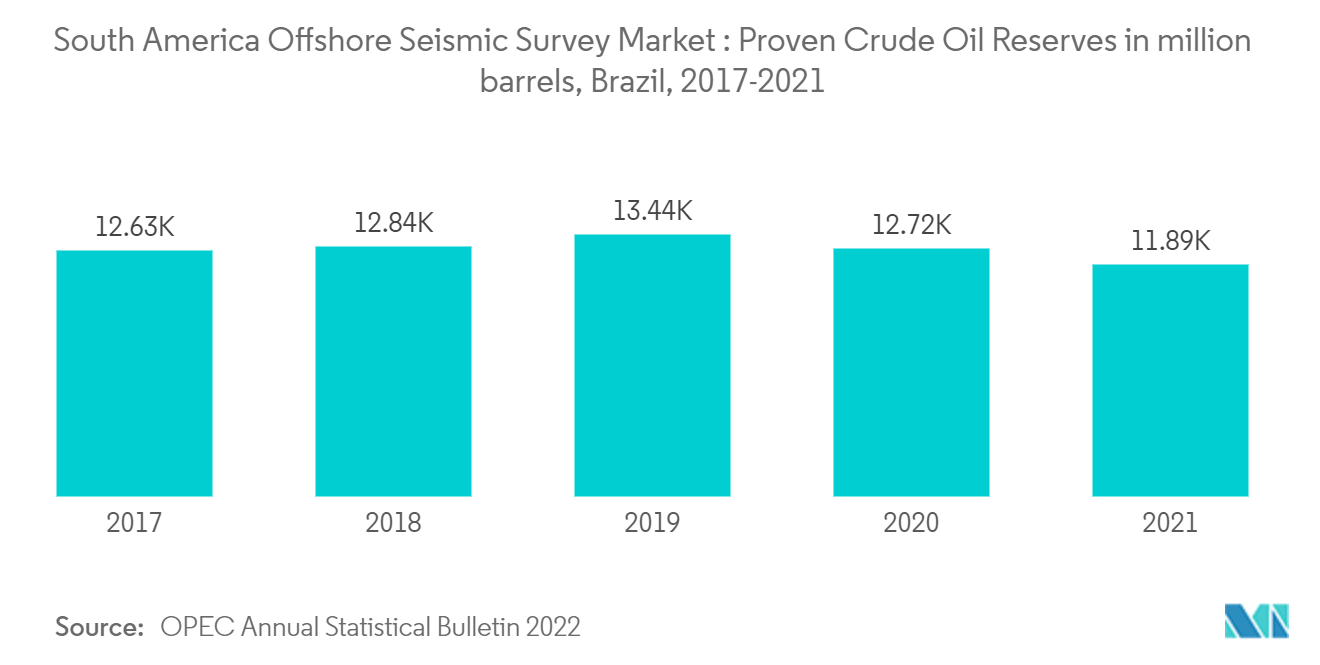Market Trends of South America Offshore Seismic Survey Industry
This section covers the major market trends shaping the South America Offshore Seismic Survey Market according to our research experts:
Oil and Gas Sector to Dominate the Market
- Offshore seismic surveys are a part of the first steps in oil and gas exploration. A seismic survey is a geophysical exploration technique that produces images of the rocks beneath the surface of the Earth. This step is crucial as the surveys' images are used to identify possible oil and gas accumulations. Countries such as Brazil, Argentina, and Colombia are a few leading seismic survey users in the oil and gas industry in the region.
- South America is home to some of the world's largest countries in terms of proven oil and gas reserves. The region, as of 2021, has proven crude oil reserves of around 329,481 million barrels. An increase of about 0.06% was observed compared to the 2017 value (329,283 million barrels). Venezuela has the largest share of more than 92% of these oil reserves, about 303,468 million barrels. Brazil and Ecuador are also leading countries with oil reserves of 11,890 million barrels and 8,273 million barrels, respectively.
- Countries such as Brazil, Argentina, Venezuela, etc., are investing more in the exploration and production of crude oil and natural gas. For instance, Petrobras plans to invest around USD 68 billion from 2022 to 2026. Of this total investment, 84% is allocated to oil and natural gas exploration and production (E&P). Of the total E&P CAPEX (USD 57 billion), around 67% will be allocated to pre-salt assets. This indicates that the upstream oil and gas sector, especially the offshore oil and gas assets in Brazil, is expected to witness significant investment, increasing the demand for the offshore seismic survey market during the forecast period.
- Furthermore, the exploration focus in Colombia will be on new drilling campaigns in the onshore Piedemonte region and opportunities in Caribbean offshore blocks, where Colombia's state-owned oil company Ecopetrol is prioritizing light oil and gas. Hence, upstream projects alone are expected to require investments of USD 10 million - USD 12 billion over the next three years.
- Also, Norwegian marine seismic data acquisition company PGS, in December 2021, stated that the company was scheduled to start a significant 4D acquisition survey for Petrobras over the Roncador and Albacora Leste fields offshore Brazil in Q2 2022. The acquisition is expected to be completed by the end of 2022. Such acquisitions are expected to create positive demand for the offshore seismic survey market during the forecast period.
- Therefore, based on the above-mentioned factors, the oil and gas sector is expected to dominate South America's offshore seismic survey market during the forecast period.

Brazil Expected to Witness Significant Growth
- Brazil accounts for about 2.9 million barrels per day of crude oil production and will be the tenth-largest oil-producing country in the world in 2021. According to the US Energy Information Administration (EIA), more than 90% of Brazil's oil production is extracted from deep-water oil fields offshore. According to OPEC Annual Statistical Bulletin 2022, Brazil accounted for about 11,890 million barrels of proven crude oil reserves in 2021, the second largest in South America after Venezuela.
- As of 2021, Brazil is the highest-spending country in South America regarding oil and gas. The country's offshore pre-salt oil fields pumped around 50% of the total oil output, and this share will increase to approximately 75% by the end of 2021. This increasing production and dependency on offshore oil and gas fields can be attributed to steadily decreasing production expenses due to improved drilling technology, growing expertise in the offshore oil and gas industry, and increased infrastructure.
- The increasing investments from Petrobras and foreign oil companies are expected to drive the oil and gas sector in the country, driving the demand for the seismic survey market during the forecast period. Brazil has several large-scale offshore upstream projects and is expected to contribute more than 20% of global offshore crude oil and condensate production by 2025. Most of the production is expected from the Pao de Acucar in the Campos basin and Carcara fields, which are expected to be initiated by the end of 2022. With the commencement of production from these two fields, the demand for seismic surveys is expected to increase significantly during the forecast period.
- Furthermore, in April 2022, France's CGG submitted plans to run a fresh non-proprietary 3D seismic survey in the deep-water section of the Espirito Santo basin offshore Brazil. The proposed campaign will likely encompass a large area in Espirito Santo where operators, including Brazilian energy giant Petrobras, Spain's Repsol, and China's National Offshore Oil Corporation, have exploration blocks. Such developments will likely create positive demand for the Brazilian seismic survey market during the forecast period.
- Therefore, based on the above-mentioned factors, Brazil is expected to witness significant demand in the South American offshore seismic survey market during the forecast period.

